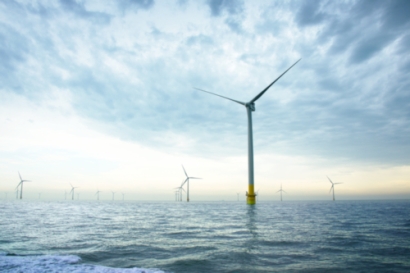
Floating offshore wind is developing rapidly. Europe today has 113 MW of floating wind turbines in operation and is in the process of developing many more and larger floating wind farms.
Norway is now building the world’s biggest floating wind farm, Hywind Tampen (88 MW). France will have four small projects of around 30 MW each up and running within 2 years. By 2024 Europe will have 330 MW of floating wind in operation.
Then things will start to scale up big time. France is now running its first of 3 auctions in 2 years for large floating wind farms, each 250 MW. Spain, Greece, Portugal and Norway all plan to start large-scale auctions in the coming year. Several large floating projects are being developed in Italy, off Sardinia, Apulia and Sicily. And Scotland have this year awarded seabed development rights for a massive 15 GW of floating projects.
All this activity and ambition is reflected in floating wind targets for 2030 that various countries have recently announced. Greece wants 2 GW by then, Spain 1-3 GW and the UK 5 GW. Italy is considering a 2030 target of 3.5 GW. Portugal is looking to auction 3 sites which could each host up 2 GW. And Ireland has huge plans for floating wind, though mainly for after 2030.
It is not unreasonable to expect that Europe will have over 10 GW of floating wind in operation by 2030. But targets don’t automatically translate into new capacity. Governments need the right policies and measures, and they have to implement them in good time.
First they need to give clarity to developers on where and how much they can build.
The locations of floating wind farms should be reflected in national Maritime Spatial Plans. Then Governments need a clear auction a schedule saying how much they will auction when. These auctions should be technology-specific. And they should provide revenue stabilization, ideally via index-linked 2-sided Contracts for Difference (CfDs).
CfDs are cheap for Governments because they get paid back as well as paying out. And they’re cheap for society because they minimize financing costs – banks are happy the upfront capital requires because with the prospect of stable revenues they see they’ll get paid back.
Floating wind will have its own distinctive supply chain. The turbines are the same as for conventional (bottom-fixed) offshore wind farms. What’s different are the floating structures on which the turbines stand. These are big structures which need to be assembled in port and coastal areas. This requires major investments in manufacturing sites and the related infrastructure.
Governments need to facilitate and incentivise these investments. And they need to ensure the grid connections are developed on time, with the right technology to connect floating structures to the grid.
WindEurope CEO Giles Dickson says, “Floating wind energy is about to take off big time in Europe. Over 100 MW is already in operation. Governments see it’s working well and that it means they can do offshore wind in deeper waters. So they’re announcing big targets and planning big auctions. Provided they put the right policies in place it is not unreasonable to expect that Europe will have over 10 GW of floating wind in operation by 2030.”

